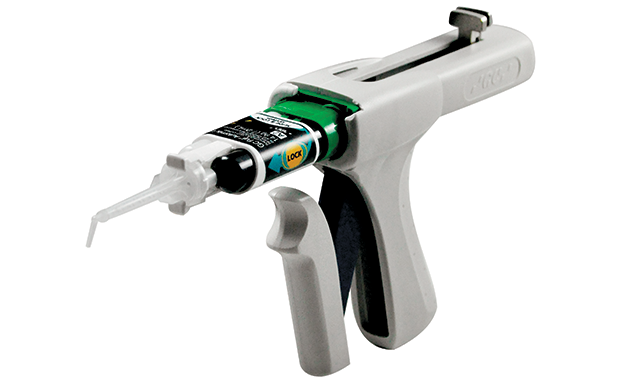How to simplify notoriously difficult restorations
Why one clinician uses the GC Fuji Automix LC to produce positive outcomes.

At the helm of the first private practice to receive the American Dental Association’s Adult Preventive Care Practice of the Year award, Dr. Brian Nový has worked hard to remain at the forefront of technological advances. Over the last 12 years as a practicing dentist, Dr. Nový has been a self-proclaimed “huge fan” of resin-modified glass ionomers (RMGI). However, three months ago, the seasoned practitioner from Westborough, Massachusetts, learned about a new product - the GC Fuji® Automix LC - which has quickly become his new favorite.
“[The GC Fuji Automix LC] makes the process even better than before. To use a resin-modified glass ionomer, I had to triturate it in a triturator,” Dr. Nový says. “[This] is a mixing cartridge that allows me to inject it directly in the patient’s mouth without taking the time to mix it.”
He believes many practitioners may have shied away from RMGIs simply because they no longer have a triturator in the office.
Related reading: How to create long-lasting restorations with GC Fuji II LC
“Eliminating the triturator opens up this whole new line of products for dentists who don’t have triturators in their office,” he says.
While the GC Fuji Automix LC is universally used for pediatric restorations, when it comes to adult teeth, it’s indicated for Class III and Class V restorations, core build-up and as a base under composite restorations.
“These have a history of being very difficult,” Dr. Nový says. “And this just seems to work beautifully. It syringes in so nicely and has such a great consistency, which seems to be less sticky than most. This stays where you put it.”
The consistency of the bioactive material is due to the unique design of the Automix, which doesn’t allow air bubbles to get trapped. Excessive air bubbles were a common occurrence with traditional RMGI composites. These advances allow the Automix to consistently produce positive outcomes, even for notoriously difficult procedures.
Another positive outcome of Dr. Nový’s use of the GC Fuji Automix LC is in the amount of time he’s saved while performing dental restorations since he began using it.

“There were so many steps where things could go wrong before. This eliminates at least four steps,” he says.
Rattling off these now outdated steps, he says, “The rush of the dental assistant is replaced just by handing me this cartridge. Then I just gently squeeze it into the tooth.”
This simplification is something Dr. Nový’s patients, who are often frightened by the hurried pace experienced during normal RMGI procedures, have welcomed.
Trending article: The top 10 things that scare your patients the most
“I also think [patients] notice they don’t have a mixer [making noise] right next to their head during the procedure,” he says, “It’s quiet.”
Perhaps best of all, while the GC Fuji Automix LC is technologically advanced, it was designed to be easy to use, even for those who are relatively inexperienced with RMGI procedures.
“There’s a learning curve with a lot of glass ionomers, but this was actually really easy to pick up,” Dr. Nový explains. “I think most dentists are going to be surprised that this glass ionomer is so much easier to use than those they’ve used in the past.”